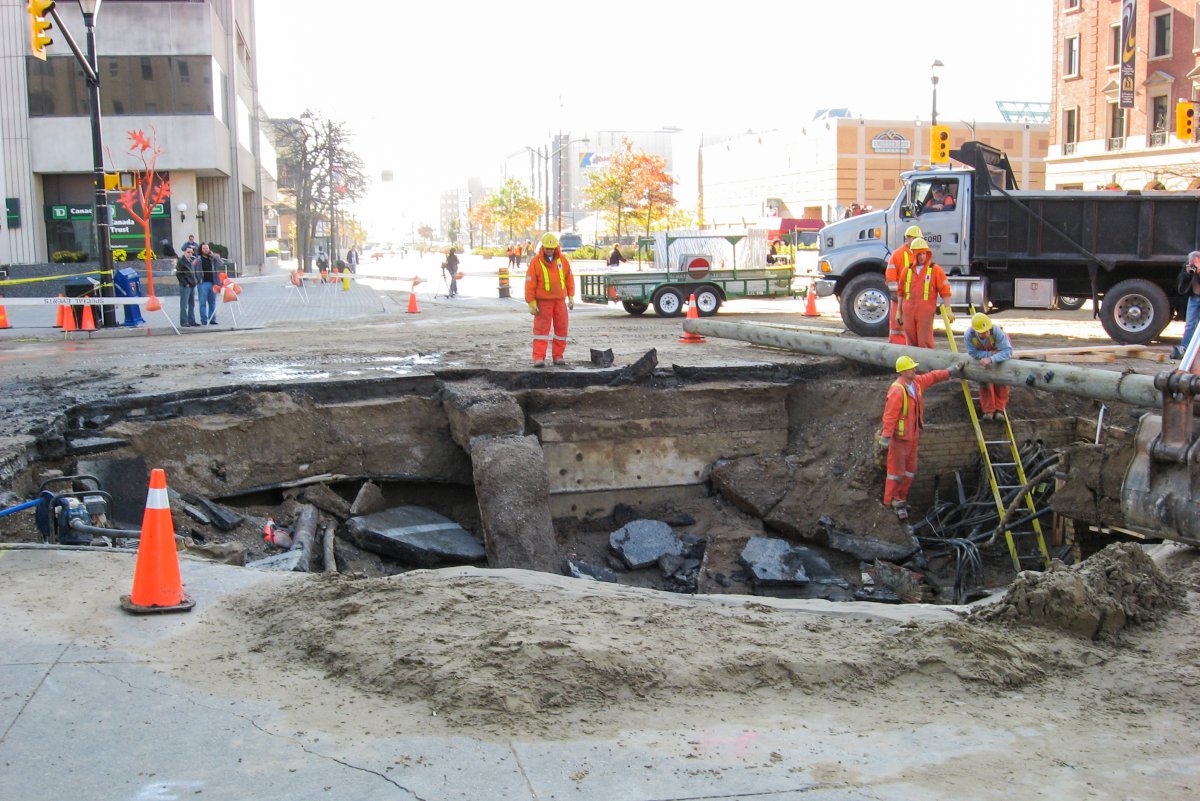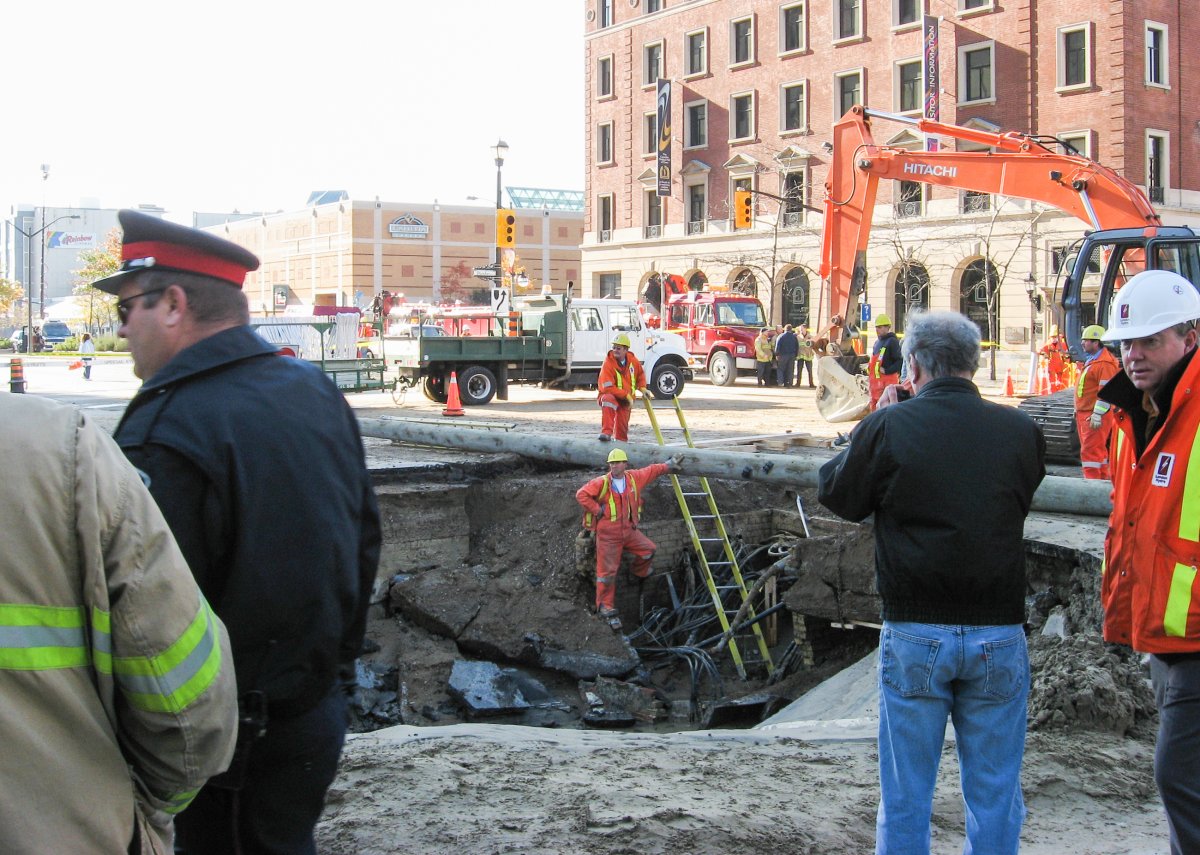It’s not just a day for giant pumpkins, Halloween also marks the 10-year anniversary of the giant downtown London sinkhole.

Thousands of workers were forced out of the downtown after a water main break led to a sinkhole and a power outage in the early morning hours of Oct. 31, 2007.
The sinkhole happened quickly.
At 3:01 a.m., a 12-inch water main broke in the northeast section of the Wellington and Dundas intersection. Ten minutes later the first city workers arrived on scene, 10 minutes after that the power went out in City Centre (home to AM980), the Hilton London (now the DoubleTree by Hilton) and Galleria London (now Citi Plaza).
Kent Guy, promotions and new media director for AM980 and Corus Radio London, arrived early to work that day.
“I recall walking over to the variety store across the street and there was water bubbling out of the ground,” he said. “Within half an hour that bubbling concrete turned into a sinkhole, which turned into a gigantic sinkhole and the road was gone within an hour and a half.”
It wasn’t long before the road collapsed, leaving behind a hole as large as a swimming pool – some 10 metres wide and 2 metres deep.
Ward 12 Coun. Harold Usher was on London city council in 2007, his initial concern was whether anyone had been hurt.
“I hoped that nothing had happened to anyone, that no one was injured or hurt,” he said. “I don’t think that anyone would imagine that something as big as that could happen. I have personally seen sinkholes in the past almost as big as that, but that was the biggest one I had seen up until that point in time.”

Get daily National news
No one was injured because of the sinkhole.
The giant hole and resulting power outage gave thousands of workers in the downtown an unexpected day off. Power was shut off to the rest of the downtown at 8:30 a.m. in the areas of York, Ridout, Dufferin and Colbourne Streets. Power didn’t return for nearly 12 hours.
- ‘Alarming trend’ of more international students claiming asylum: minister
- TD Bank moves to seize home of Russian-Canadian jailed for smuggling tech to Kremlin
- Why B.C. election could serve as a ‘trial run’ for next federal campaign
- Justin Trudeau headed to UN Summit of the Future amid international instability
It would take five weeks to repair the sinkhole and re-open the intersection to London traffic.
The water main, which was at least 60 years old, sparked a fierce debate about the state of London’s infrastructure.
Ironically, Usher was in Ottawa at the time talking about infrastructure.
“I was at FCM (Federation of Canadian Municipalities) in Ottawa and we were talking about infrastructure costs and we had just gotten a review that was saying there was a $250-billion infrastructure gap in Canada,” he said.
Usher says he used the sinkhole to advocate for more infrastructure funding for London.
Over the past 10 years, London city hall has spent hundreds of millions of dollars to improve infrastructure and will continue to do so. A report earlier this year said London plans to spend $390 million on roads, bridges and traffic lights over the next 10 years. However, the report also said an additional $190 million was needed.
As of the start of 2017, the infrastructure gap in London was $52.1 million, but it could quadruple over the next decade.
Despite the continued spending, Usher says the city is in a better place than where it was in 2007.
“The federal government has helped us a great deal and we as the city of London have taken some drastic actions to modernize our infrastructure as much as possible,” he said.
Usher points to the fact London has had several sinkholes since 2007, but not as bad as the one at Wellington and Dundas.
The most notable sinkhole over the past 10 years happened at the corner of Oxford and Richmond Streets in 2011. It cost the city $105,000 to repair the Oxford and Richmond sinkhole and over $1.1 million to repair the Wellington and Dundas sinkhole.
“We learned our lesson,” said Usher.














Comments